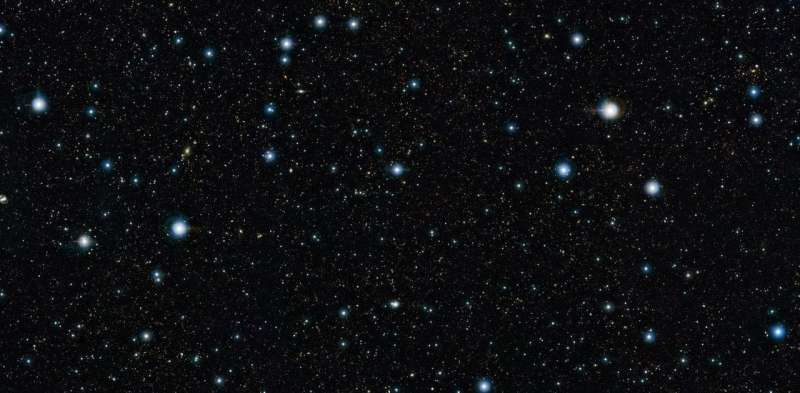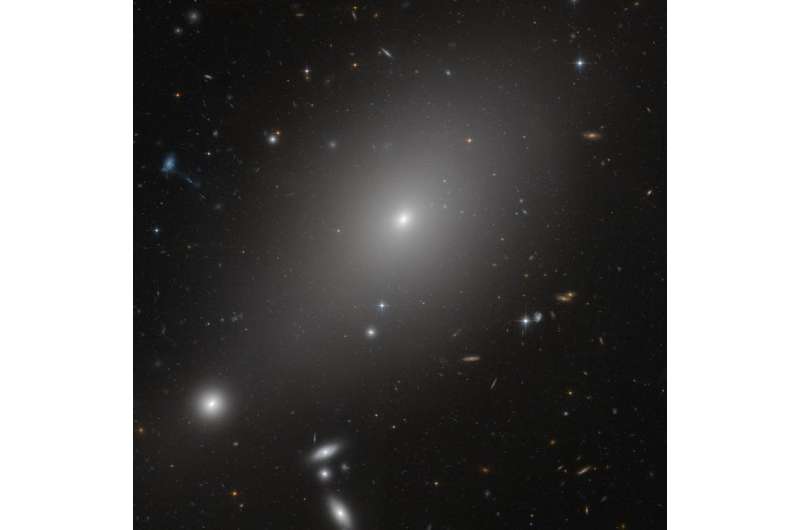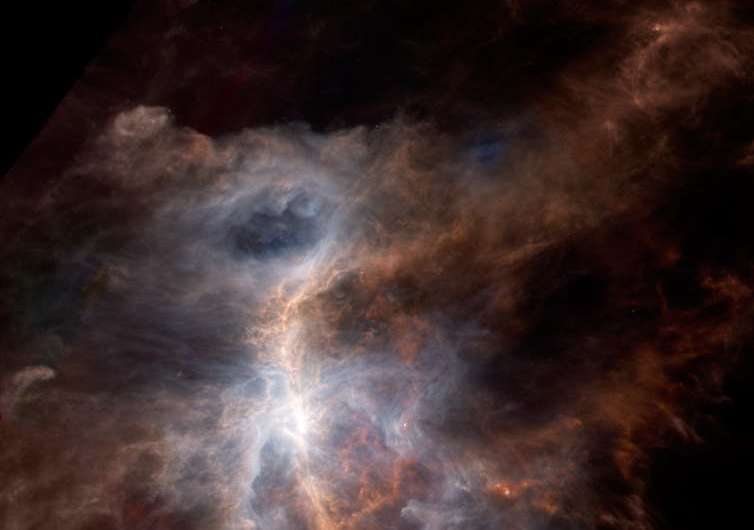Study of distant galaxies challenges the understanding of how stars form

The most massive galaxies in our neighbourhood formed their stars billions of years ago, early in the history of the universe. At the present day, they produce very few new stars. Astronomers have long believed that is because they contain very little gas – a key ingredient necessary to produce stars. But our new study, published in Nature Astronomy, is now challenging this long held view.
Through probing the extreme environments of faraway massive galaxies, we can learn not only about their evolution and the history of the universe, but most importantly about the fundamental processes regulating the formation of stars. Given that stars produce most of the different types of atoms in our bodies and the world around us, understanding how they were formed is essential if we are to know where we came from.
Galaxies exist in two main types: disc and elliptical. Disc galaxies, including the Milky Way, are flat and contain large reservoirs of gas that they use to continually form stars. Elliptical galaxies are massive, round and stopped forming stars long ago. Most theories assume that at some point elliptical galaxies lost their gas reservoirs, which caused the rate of star formation to drop.
Distant light
Our team investigated whether there are other ways in which distant, elliptical galaxies could have lost their ability to form stars. Distance to galaxies are measured by how bright its stars are, in light years (defined as how long it takes the light to reach us in one year). As it takes so long for the light from these faraway galaxies to reach us, we can work out that they appear to us as they were 10 billion years ago.

Ideally we would want to directly observe the gas in these galaxies, but this is extremely challenging and would require several hours of observations per galaxy – and we need to look at thousands of galaxies. Instead, we opted to study dust. Dust (cold rather than hot) only represents 1% of the interstellar matter in a galaxy, but it is found wherever cold gas is. A galaxy that contains a lot of dust therefore also contains a lot of gas.
We used data from the Cosmological Evolution Survey (COSMOS), which covers a large patch of the sky observed by most major telescopes, on Earth and in space. We used images from infrared to radio wavelengths of light, which allows us to measure both the rate of star formation and the cold dust mass in galaxies.
Since the galaxies we are interested in are so far away, it is impossible to detect each galaxy individually in the existing infrared or radio data. Instead, we combined the light from 1,000 galaxies and determined how much gas they contain on average and how quickly they are forming stars.

As a result, we made an exciting discovery. Despite having low star formation rates, the elliptical galaxies contain surprisingly large amounts of gas: 100 times more than was expected. This is surprising in two ways. It challenges our standard view of elliptical galaxies as "boring" gas-poor objects. But it also forces us to rethink the basic view of star formation processes – we have always assumed that the presence of cold gas must lead to star formation. Here, we find that elliptical galaxies form stars far less efficiently than disk galaxies at the same epoch.
So why is that? Nine years ago, I predicted this possibility from numerical simulations I had run as a Ph.D. student. I found that in disc galaxies, the gravitational pull of the stars helps the gas to collapse to form new stars. In contrast, the gas in elliptical galaxies feels a weaker pull from the stars and does not collapse so easily. It is fascinating that the global morphology of a galaxy can control what happens at the smallest scales.
The next steps of our research will use new simulations and hopefully direct observations of the cold gas itself with the Atacama Large Millimeter/submillimeter Array (ALMA), an observatory in Chile, to improve our understanding of the complex interplay between star formation and galaxy morphology. This will shed light on universal processes ultimately happening in every galaxy, including our very own Milky Way.

Provided by The Conversation
This article was originally published on The Conversation. Read the original article.![]()





















